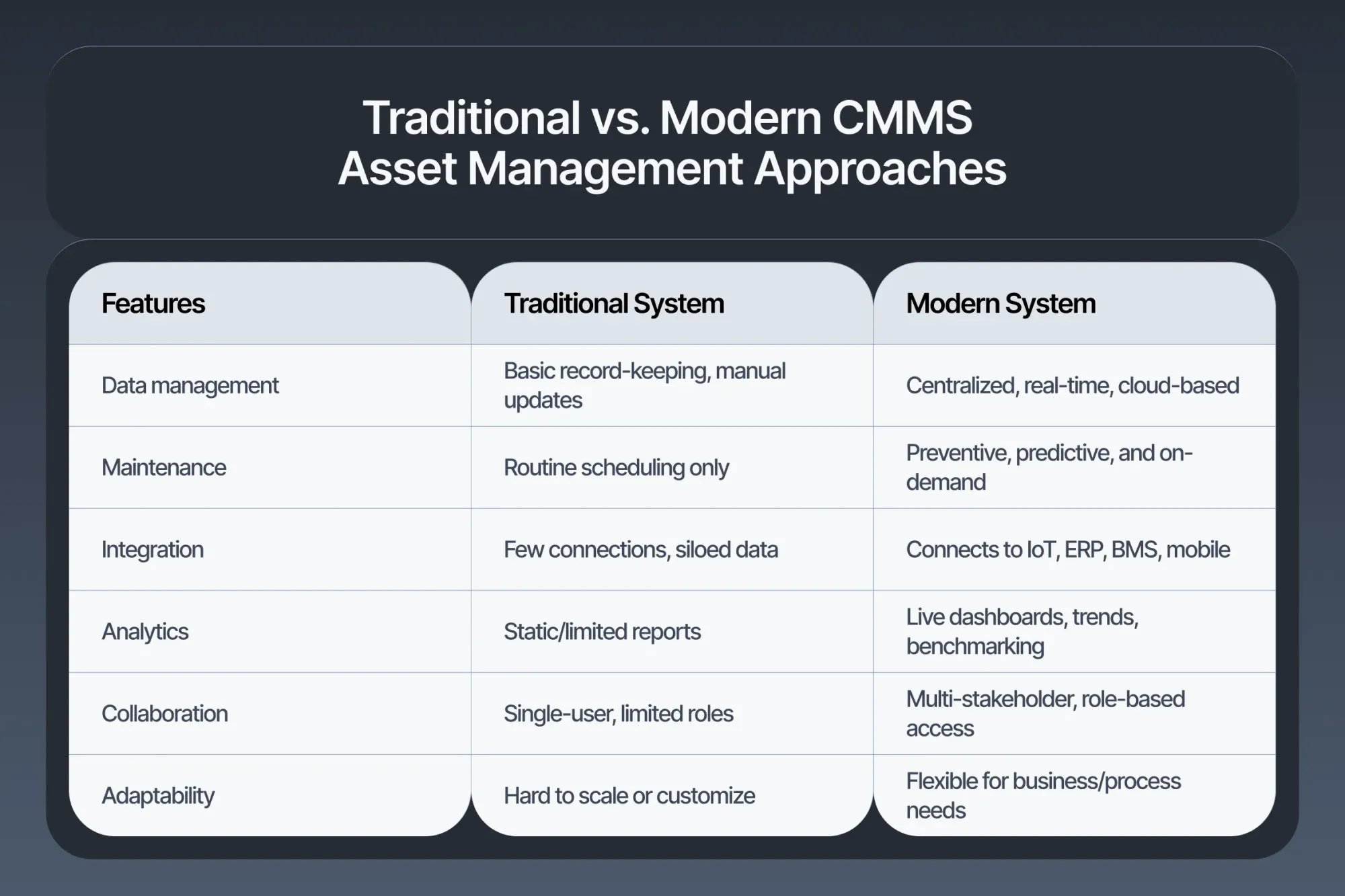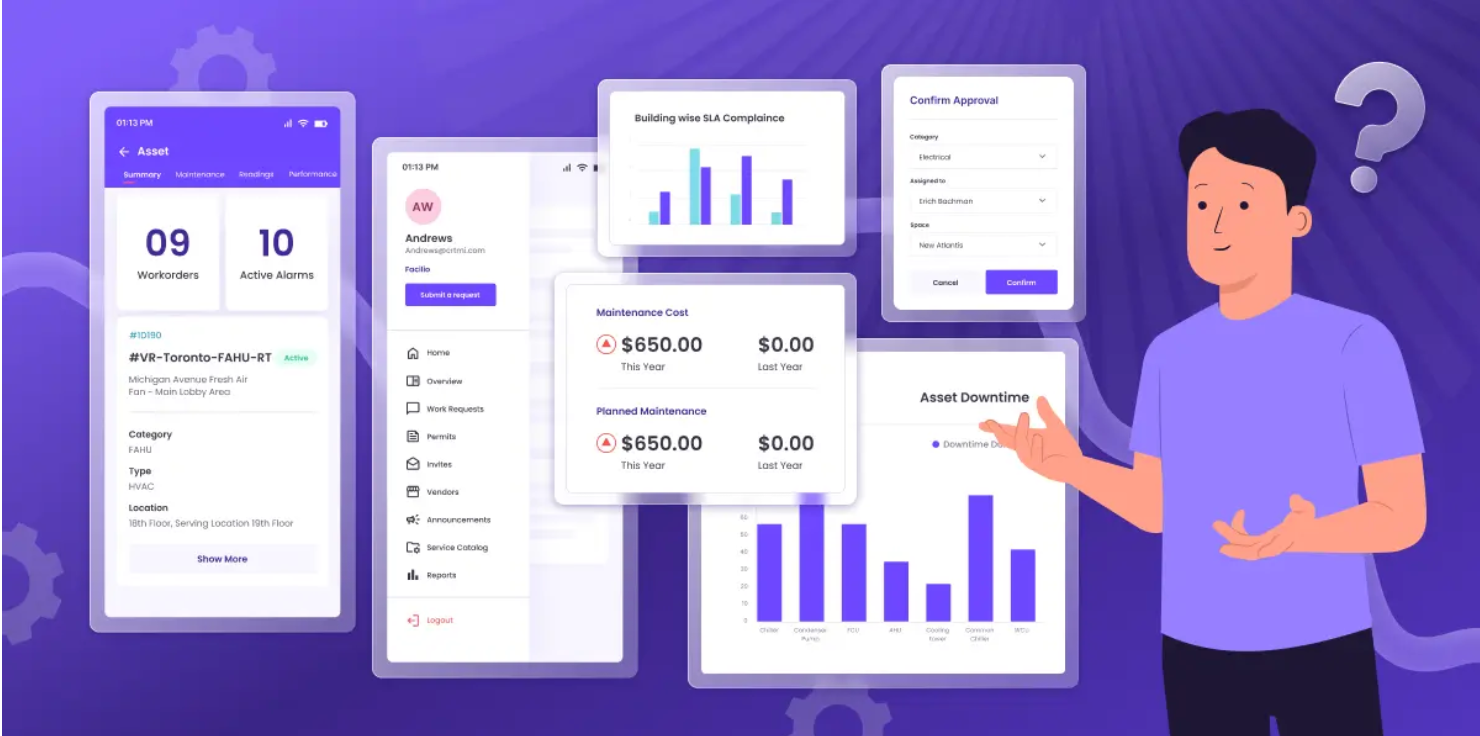Effective asset management is essential for any organisation that relies on critical equipment and infrastructure.
Automated maintenance processes, real-time visibility and reliable data aren't just "nice-to-have" anymore, they are fundamental for reducing downtime and maximising asset value.
What is Asset Management ?
This includes facilities, machinery, fleets, and infrastructure from initial deployment to retirement. A modern CMMS centralises asset data - serial numbers, performance logs, manuals, and maintenance history and automates work order creation, reporting, and compliance reminders.
The result: Teams can prevent breakdowns, extend asset life, and reduce wasted spend.
What Does Asset Management Include?
A comprehensive CMMS's Asset management, gives you command of every asset interaction - addressing visibility gaps and maintaining control across the full lifecycle.
These are the core functions that ensure assets are tracked, maintained, and optimised:
- Asset inventory tracking: Monitor assets by type, location, and status to prevent losses and double-booking.
- Work order automation: Trigger planned, reactive, and preventive maintenance tasks automatically based on asset condition, time, or usage.
- Performance analytics: Benchmark asset health, downtime, and operating costs with live data.
- Documentation & compliance: Compile inspection records, maintenance logs, and audit trails to meet regulatory needs.
Why Is Asset Management Important?
Asset-intensive industries face high costs from unscheduled equipment failures, operational inefficiency, and missed compliance. According to a recent survey, the leading causes of downtime are aging assets (34%), mechanical breakdowns (20%), and delays in maintenance actions.
1. Drives Cost Efficiency at Scale
Asset-intensive operations bleed money through unplanned downtime, emergency repairs, and inefficient maintenance routines. A CMMS enables data-driven asset management, reducing these costs through preventive and predictive strategies—helping protect margins without sacrificing performance.
2. Extends Asset Lifespan and ROI
High-value assets like HVACs, chillers, elevators, and production equipment are long-term investments. CMMS ensures these assets are consistently maintained to OEM standards, extending their usable life and extracting maximum value over time.
3. Increases Operational Resilience
CMMS gives real-time visibility into asset health and maintenance workflows. This transparency reduces single points of failure and enables teams to act swiftly, crucial in minimising business disruption and ensuring continuity.
4. Supports Strategic Decision-Making
With centralised data on asset utilisation, performance, and maintenance costs, CMMS enables executives to make informed capital planning decisions, when to repair vs. replace, how to prioritise investments, and where to allocate resources.
5. Ensures Compliance and Audit Readiness
Regulatory violations and safety incidents can be costly and reputation-damaging. CMMS helps ensure your facility stays audit-ready, with accurate logs, automated compliance workflows, and traceable records.
6. Aligns with ESG and Sustainability Goals
By optimising energy-intensive assets and enabling proactive maintenance, CMMS helps reduce emissions, waste, and energy use - directly supporting your organisation’s sustainability agenda.
Traditional vs. Modern Asset Management Approaches
Choosing the right platform shapes not just maintenance, but the speed and agility of your entire operation. Below are some key differences that set new-generation methods apart from outdated systems:

Modern asset management means fewer headaches, easier access to information, and proactive maintenance for longer asset life.
Key Functionalities of Asset Management
To manage assets well, you need more than just a registry, a modern CMMS brings all asset management essentials onto a single platform yielding faster outcomes. These are some of the features that power data-driven maintenance:
- Comprehensive asset registry: All asset data (type, location, attributes, history) in one place.
- Work order lifecycle management: Auto-generate, assign, track, and close both scheduled and emergency work orders.
- Condition-based monitoring: Integrate with IoT sensors or manual inputs to trigger alerts and service tasks.
- Analytics & benchmarking: Portfolio-wide comparisons of asset usage, failure rates, and cost per asset.
- Compliance management: Flag overdue inspections, auto-remind for certifications, and store digital records.
- Inventory synchronization: Align spare parts, consumables, and reordering with asset maintenance schedules.
How to Choose the Right Asset Management Software
Choosing a right asset management software is about getting results that match your operational ambitions, so your investment pays off and scales with your business. Use these points to guide your selection:
- Built for every stakeholder: From on-ground teams to the C-suite, the platform should enable visibility, collaboration, and faster decision-making.
- Connected across systems: Look for solutions that unify BMS, ERP, and IoT data, so nothing falls through the cracks.
- Custom-fit to your workflows: No two portfolios are the same. The best CMMS platforms offer drag-and-drop workflows, custom reports, and scalable configurations.
- Mobile-first, always-on: Teams in the field need real-time updates, not paperwork. Prioritise mobile accessibility and sync across devices.
- Audit-ready, by design: Ensure built-in compliance tracking, digital records, and instant reports when it counts most.
- Backed by results: Ask for real-world examples - reduced downtime, cost savings, or improved SLA performance.
Want to see how a modern, connected CMMS can elevate your asset management? Facilio offers a unified platform designed for today’s dynamic property operations.


